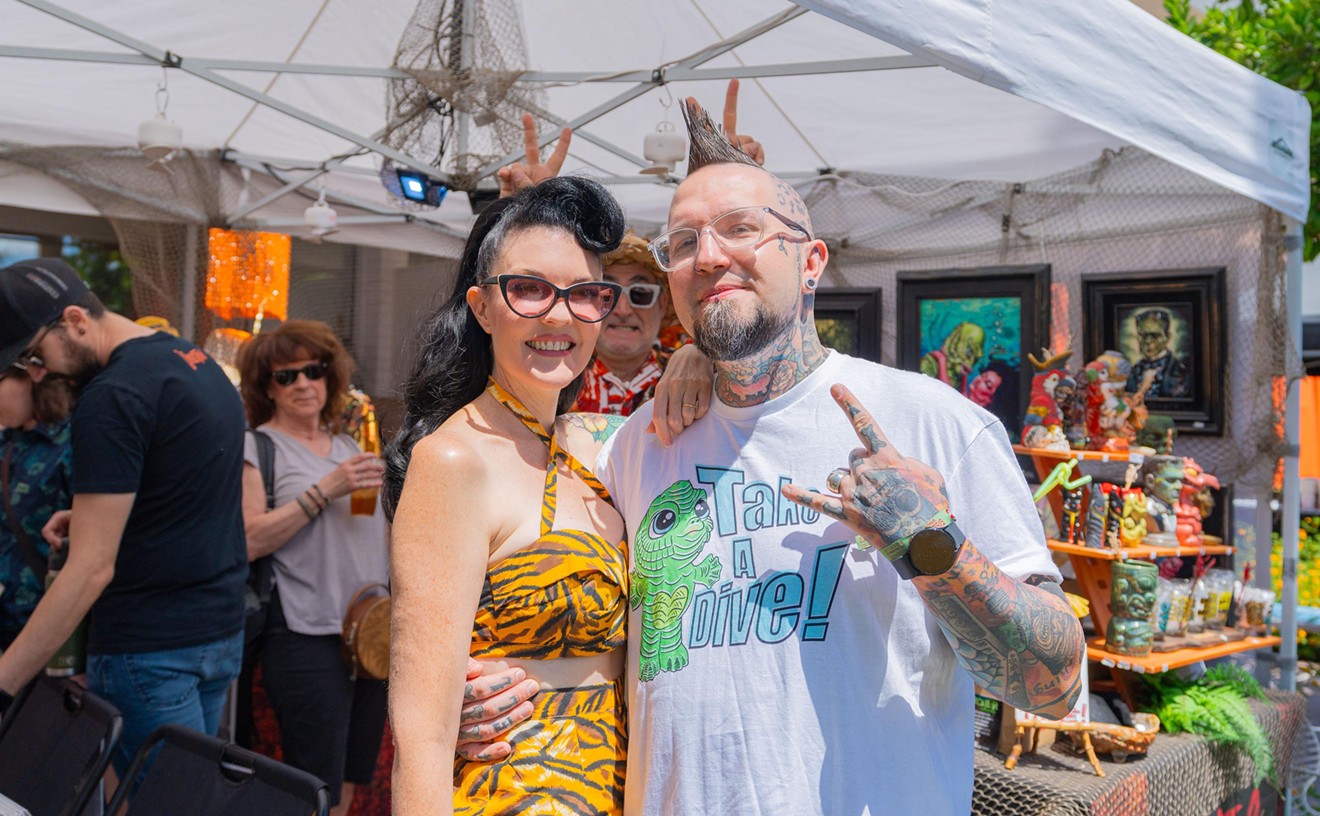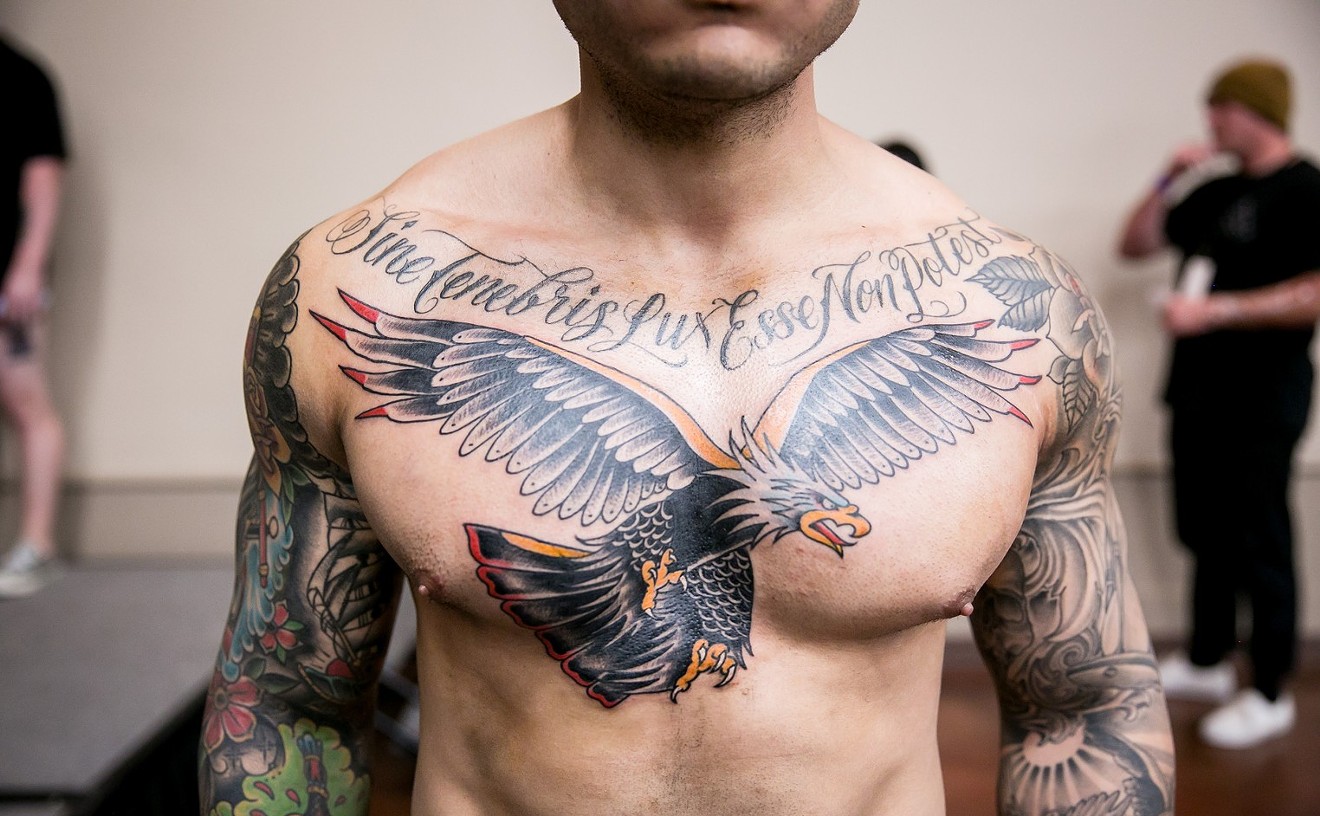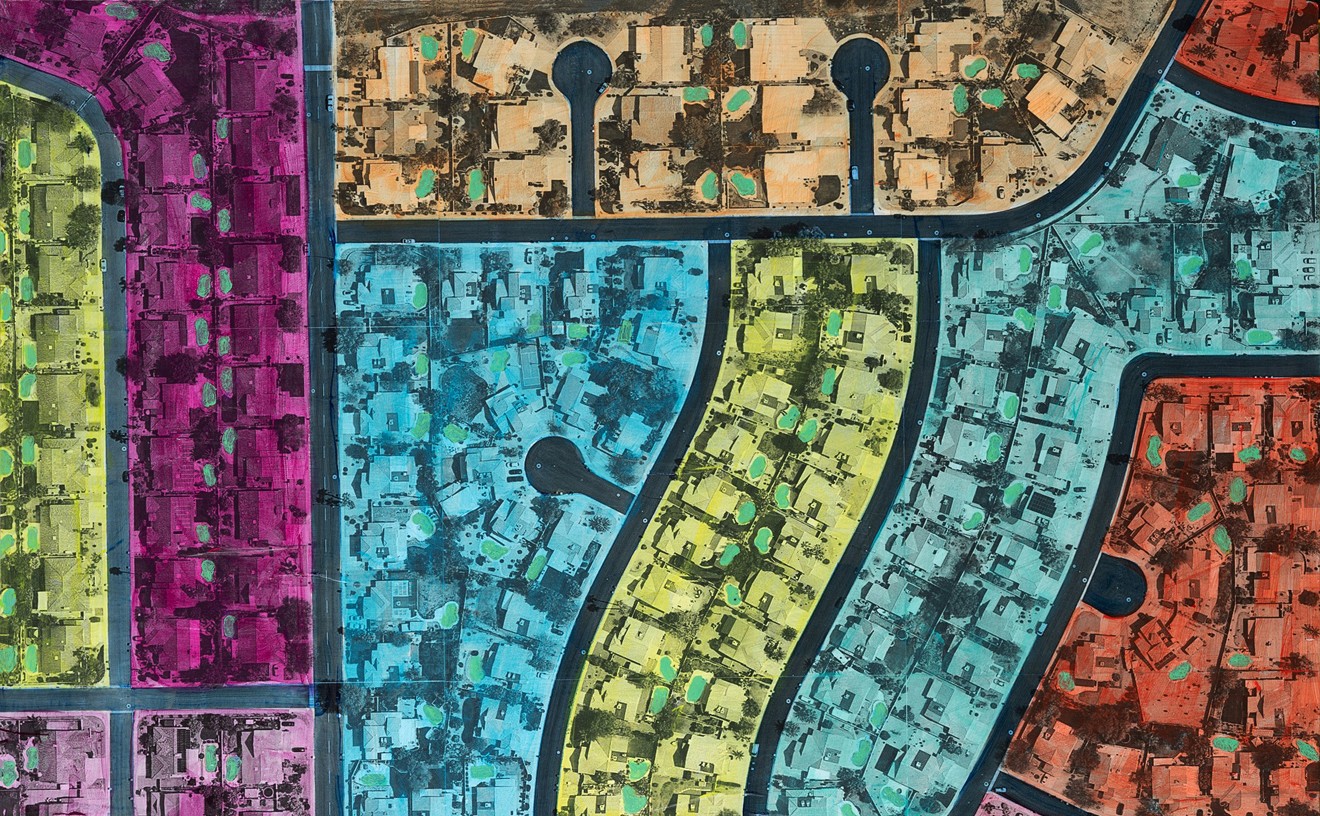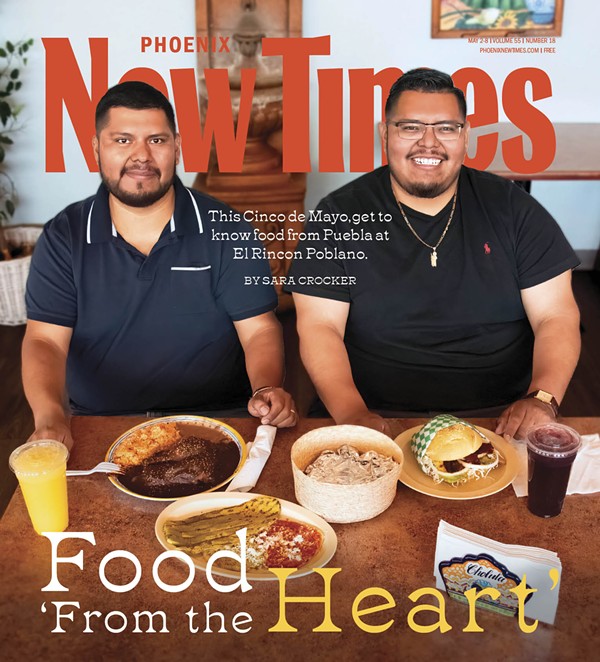It is completely possible that Rihanna's most glamorous moment, the instant she will look upon with a wistful sigh in her senior years, was at the 2015 China-inspired Metropolitan Museum of Art Costume Institute Gala. She arrived, arguably the pinnacle in a long line of celebrities and fashionistas, in a golden creation by Chinese designer Guo Pei. Two years in the making, the garment was trimmed with fur and embroidered with floral patterns you'd normally find flanking an Asian dragon. While the pop star's look was, by far, the most memorable of the evening's attendees — no shade on Lady Gaga's imperial empress or Diane von Fürstenberg serving age-appropriate chic — the biggest achievement was the exhibit accompanying the gala, both of which are impeccably chronicled in The First Monday in May, directed by Andrew Rossi. The documentary, released this month, will play twice at the Phoenix Art Museum on Wednesday, June 1, in conjunction with its own somewhat lackluster current fashion show chronicling the last 50 years of the museum's ample collections.
More than just a film about fashion or the creation of the Met exhibit "China: Through the Looking Glass," which became one of the top five exhibits of any kind in the Met's history, The First Monday in May makes a subtle but clear case for the inclusion of couture in the marble halls of the art world. (I happened, quite by accident, to see "China: Through the Looking Glass" at the Met last year, and I can say, unequivocally, that it was one of the most dazzling collections of any kind of art I've ever seen.) The film certainly catalogs many of the breathtaking dresses featured in the show, but ultimately, The First Monday in May is a story of creativity against insurmountable odds, ivory-tower skepticism, and the vagaries of chance. At the heart of the film are two figures, one well-known and oftentimes unfairly reviled, and the other a less public, but no less significant, persona.
Flawlessly dressed and usually seen walking with a Starbucks in hand, her ubiquitous Chanel sunglasses masking a discriminating gaze, is the legendary Anna Wintour, editor-in-chief of Vogue, artistic director of Condé Nast, and the chair of the Met Gala, a yearly event which brings celebrity, pop culture, fashion, and the Met together in what former Vogue editor-at-large André Leon Talley calls "the Super Bowl of ... fashion events." Yes, she loathes the furniture in the new Vogue offices at One World Trade Center. Yes, she tells an assistant to make sure a tiresome guest isn't on his cell phone the entire time like last year. Yes, she readily dismisses the concerns of the Chinese press over the exhibit's focus on China's past versus its present. But as Baz Luhrman, the gala's creative consultant, says of her, "If Anna was a man, there might be less focus on that."
Watching Wintour make aesthetic decisions about everything from the dinner napkins to the decor of the entrance hall (which included an immense, blue, Ming-inspired vase whose white accents were shaped by 250,000 pristine white roses), is like being ushered into an artist's studio, one who knows her craft better than almost anyone and has the unapologetic courage to do what's right. By showing her at work and at pseudo-play, as when she's clearly delighted by her daughter's gala dress fitting, we get a picture of a more human Wintour, one that perhaps we can understand. Not that she'd care, but it makes for a nice bit of moviemaking.
The genius behind the exhibition and the beating heart behind the film is Andrew Bolton. He curated the Met's other wildly popular fashion exhibition, 2011's "Alexander McQueen: Savage Beauty," a retrospective that went up one year after the designer's suicide. Bolton calls that show the "albatross around [his] neck," because ever since then, the New York Times has declared that no Costume Institute exhibit has lived up to McQueen. The curator wanted to outdo himself with "China: Through the Looking Glass," and even down to the final, stressful hours before the opening, he never relents on his grand vision.
He becomes our everyman, which is somewhat paradoxical given his vast knowledge on fashion, but because of his humility, he never seems like someone out of reach. He's genuinely excited to walk through the vaults of Yves Saint Laurent in Paris or interview John Galliano (one of the most mesmerizing figures in the film). We learn how a 17 year-old Bolton, who grew up in Lancashire, England, was asked by a career counselor what he wanted to do; he replied that he wanted to work as a curator at the Costume Institute. He's absolutely charming, and even when he faces the patronizing curator of the Met's Asian wing, who dismissively says that the Asian art has "intellectual content" while the fashion is just "about creating a sense of hype," Bolton navigates the conversation with graceful British aplomb.
Other legends of the industry make appearances, including an engaging Jean Paul Gaultier, Karl Lagerfeld (who categorically dismisses the need for any approval from the art world by reminding everyone that Coco Chanel called herself "a dressmaker"), and the ever-charming New York Times fashion photographer Bill Cunningham. These cameos will make fashion fans squeal with delight, but for the sartorial novice, the breadth of intelligent commentary about the subject easily inspires awe for the creative brilliance of the fashion elite.
It's the film's final moments, though, that would convert even the most recalcitrant of fashion skeptics. Bolton, dressed in a suit designed by his partner, Thom Browne, walks through the gallery alone in a rare private moment. Downstairs, on the steps of the Met, the stars are arriving, flashbulbs are creating a lightning storm of celebrity — the gala has begun — but Bolton checks his beauties one last time before they're ogled by the public. Gowns from 1930s and '40s Hollywood give way to glorious garments by legendary designers including Valentino, Gaultier, Galliano, Tom Ford, and Christian Dior, and Bolton reviews every single one. It's a haunting revelation of a man driven by beauty, by the images of the fashion magazines he saw in his youth, and by the fantasy of a life he'd always wanted to live. It's lonely, it's poignant, and it's pure art.
The First Monday in May shows at the Phoenix Art Museum, 1625 North Central Avenue, on Wednesday, June 1, at 5 and 7 p.m. Tickets are free, but should be reserved in advance at www.phxart.org.
[
{
"name": "Air - MediumRectangle - Inline Content - Mobile Display Size",
"component": "18478561",
"insertPoint": "2",
"requiredCountToDisplay": "2"
},{
"name": "Editor Picks",
"component": "16759093",
"insertPoint": "4",
"requiredCountToDisplay": "1"
},{
"name": "Inline Links",
"component": "17980324",
"insertPoint": "8th",
"startingPoint": 8,
"requiredCountToDisplay": "7",
"maxInsertions": 25
},{
"name": "Air - MediumRectangle - Combo - Inline Content",
"component": "16759092",
"insertPoint": "8th",
"startingPoint": 8,
"requiredCountToDisplay": "7",
"maxInsertions": 25
},{
"name": "Inline Links",
"component": "17980324",
"insertPoint": "8th",
"startingPoint": 12,
"requiredCountToDisplay": "11",
"maxInsertions": 24
},{
"name": "Air - Leaderboard Tower - Combo - Inline Content",
"component": "16759094",
"insertPoint": "8th",
"startingPoint": 12,
"requiredCountToDisplay": "11",
"maxInsertions": 24
}
]










